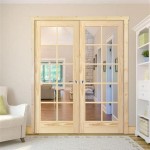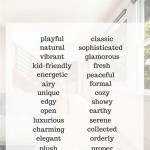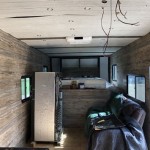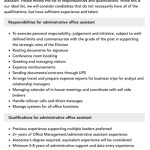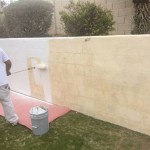How Much Does It Cost To Paint A 3000 Sq Ft House Interior?
Determining the cost to paint the interior of a 3000 sq ft house involves numerous variables. Painting is a multifaceted project, and understanding these factors is crucial for accurate budgeting. The final price can range significantly based on the quality of materials, labor costs, surface preparation requirements, and geographical location.
A general estimate to paint a 3000 sq ft home's interior can vary widely. National averages typically fall between $9,000 and $30,000. However, this range represents a broad spectrum. To arrive at a more precise figure, it’s necessary to consider the individual elements that contribute to the overall expense.
Key Cost Factors: Square Footage and Surface Area
While the stated square footage of the house is 3000 sq ft, the actual painted surface area is a more critical factor in determining cost. Walls, ceilings, trim, and doors all contribute to the total surface requiring paint. A house with higher ceilings will naturally have a larger wall surface area compared to a house with standard ceiling heights.
Estimating the surface area can be achieved using the following calculation: measure the length of each wall in each room and add these figures together to find the perimeter. Then, multiply the perimeter by the ceiling height to get the total wall surface area. Add an estimated surface area for ceilings (usually close to the square footage of the floor) and trim (doors, windows, baseboards) to determine the total area requiring paint.
For example, a 3000 sq ft single-story house might have a perimeter of around 240 linear feet. With standard 8-foot ceilings, the wall surface area would be approximately 1920 sq ft. Adding the ceiling area (3000 sq ft) brings the total to 4920 sq ft. Estimating trim at around 500 sq ft brings the total paintable surface area to approximately 5420 sq ft. This is crucial because professional painters usually provide estimates based on surface area, not just the home's listed square footage.
Paint Quality and Labor Costs
The type of paint selected plays a substantial role in the final cost. Higher-quality paints, while more expensive upfront, often provide better coverage, durability, and color retention. This can translate to fewer coats required and a longer lifespan, potentially saving money in the long run.
Paint prices range from budget-friendly options at around $20 per gallon to premium brands costing $60 or more per gallon. For a 3000 sq ft house, depending on the number of coats and surface porosity, 15-25 gallons of paint might be needed. A higher-quality paint costing $50 per gallon would significantly increase the material cost compared to a lower-grade paint costing $25 per gallon.
Labor costs are typically the most significant portion of the overall expense. Labor rates vary considerably depending on the region, experience of the painters, and complexity of the job. Professional painters often charge by the square foot of surface area, by the room, or by the hour. Rates can range from $2 to $6 per square foot, encompassing both labor and material costs. For the previously calculated surface area of 5420 sq ft, this translates to a labor cost range of $10,840 to $32,520.
Lower labor costs may indicate less experienced painters or a faster, less meticulous approach. It's crucial to obtain multiple quotes and carefully evaluate the painters' experience, references, and insurance coverage before making a decision. A cheaper quote might result in a lower-quality finish or the need for more frequent repainting.
Surface Preparation and Additional Considerations
The condition of the walls significantly impacts the cost of the project. Walls with existing damage, such as cracks, holes, or water stains, require patching and priming before painting. Wallpaper removal adds another layer of complexity and cost, as it is a time-consuming and labor-intensive process.
Surface preparation can include tasks like sanding, scraping, cleaning, and applying primer. Priming is essential for ensuring proper paint adhesion, especially on new drywall, patched surfaces, or surfaces with existing stains. The cost for surface preparation can range from a few hundred dollars for minor repairs to several thousand dollars for extensive damage or wallpaper removal.
Other factors contributing to the overall cost include the number of coats of paint required, the complexity of the paint job (e.g., intricate trim work, multiple colors), and the accessibility of the painting areas. High ceilings or difficult-to-reach areas may necessitate the use of specialized equipment, such as scaffolding, which can increase labor costs.
Homeowners should also consider the cost of moving furniture and protecting floors and fixtures. Some painting companies include these services in their estimates, while others may charge extra. It is crucial to clarify these details upfront to avoid unexpected expenses.
The geographical location also influences the cost of painting. Labor rates and material prices vary significantly between different regions. Larger metropolitan areas generally have higher labor costs compared to smaller towns or rural areas. Material prices can also fluctuate depending on local supply and demand.
Obtaining detailed, written estimates from multiple painting contractors is highly recommended. These estimates should clearly outline the scope of work, materials to be used, labor costs, and any additional charges. Comparing these estimates allows homeowners to make an informed decision and choose a contractor that meets their budget and quality expectations.
Furthermore, it is prudent to inquire about the contractor's insurance coverage, including liability and worker's compensation. This protects the homeowner from financial liability in case of accidents or injuries during the painting process. Checking references and reviewing online reviews can provide valuable insights into the contractor's reputation and quality of work.
The timing of the painting project can also impact the cost. Painting contractors may offer lower rates during the off-season, typically in the late fall and winter months, when demand is lower. Scheduling the painting project during these times can potentially save money.
Finally, consider the impact of DIY versus professional painting. While DIY painting can save on labor costs, it requires considerable time, effort, and skill. Mistakes can be costly to correct, and a professional paint job typically provides a superior finish and durability. Evaluating the time commitment, skill level, and desired quality is essential when deciding between DIY and professional painting.

Cost To Paint A House Whole Painting Fixr

How Much Does Interior House Painting Cost A New Leaf

How Much Does It Cost To Paint The Interior Of A House In Paintrite Pros

Cost Of Painting A House Interior Comprehensive Guide

Average Cost To Paint A House Coloradopainting Com

How Much Does It Cost To Paint The Interior Of A House Angi

How Much Does It Cost To Paint A House Interior

How Much Does Interior House Painting Cost In 2024 Forbes Home

How Much Does Interior House Painting Cost A New Leaf

The Cost To Paint Interior Of A House In Diamond Star Painting
Related Posts


